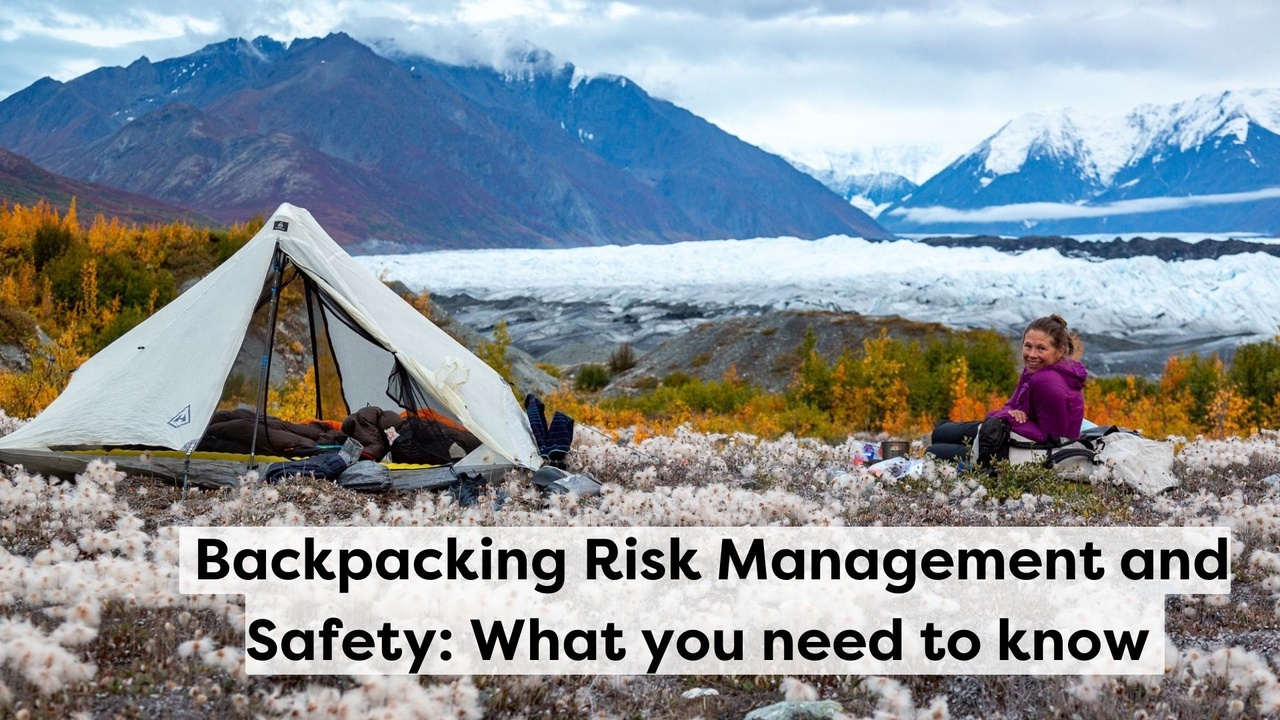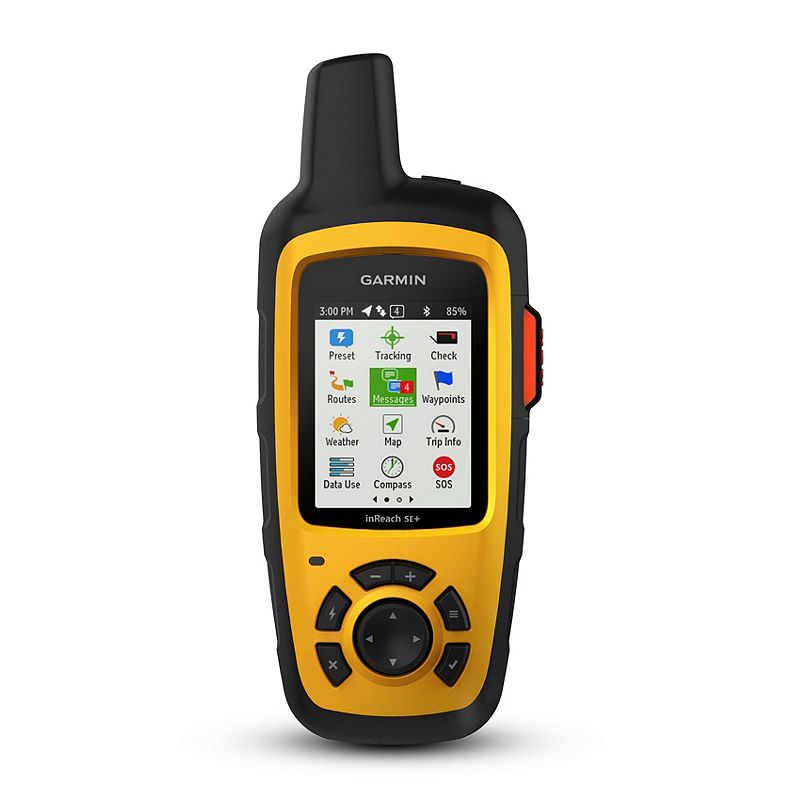Backpacking Risk Management and Safety: What you need to know

Planning essentials for backpacking trips
Risk management is one of the most important elements of planning for backpacking trips. Whether it’s your first trip or your two hundredth, spending time thinking through the hazards you might encounter and what you’ll do about them is essential both for your own safety and for those with you.
While you can never completely eliminate risk, appropriate planning means you will be more prepared if something bad does happen. Having a safety plan can mean big wins like smarter decision making, shorter time to receive rescue assistance, or the ability to handle the situation on your own without needing outside assistance at all.
Let’s dive into principles of risk management in backpacking and how you can manage your safety proactively and mindfully.
How to Assess Risk and Safety for Backpacking Trips
The first step to managing risk is thinking through and understanding what risks will exist on your trip. Thorough risk assessment means a safer, more informed trip. Having a structured set of categories to think through can be very helpful for creating a thorough safety plan. With enough practice, risk assessment will become more intuitive.
When considering safety, think of each risk factor as a lemon. This idea is a variation of James Raffan’s Lemon Theory on crisis management in the wilderness: when you have too many lemons, bad things tend to happen. On a similar note, not all risks are created equal! One factor might add a lot of risk: a whole bucket of big, juicy lemons. Other factors might be minor, maybe just one small lemon. For each trip, think about your lemon budget. How many lemons are you willing to put up with? Then, think about how you might get rid of some lemons through planning.
If you’re a multi-sport enthusiast, these tips apply not only to backpacking, but many other forms of outdoor adventures, too.

What Risks Does Your Trip Plan Include?
For this section, we’ll cover risks that you can control before your trip begins. These are factors that can be more or less risky depending on your plans.
Group size
A solo trip carries much greater risk than a small group. Even a group of two enables you to share the weight of gear, provide additional expertise and experience, and have another brain to help with decision-making in tricky situations. Similarly, a group of 4-6 means that, in case of an emergency or injury, the group can split up to get help without leaving anyone alone.
Group experience
What is the experience level of each participant? What is the level of training and fitness each person has under their belt? Do any of the participants have any special training or qualifications that would be relevant to the trip, like swiftwater rescue, wilderness first responder certification, or other medical training? The more collective experience, the fewer lemons you’re dealing with.
Itinerary and route
Broadly speaking, how ambitious is your trip plan? Are you aiming for high mileage or easy days? How easy to follow is the route? Established trails tend to be less risky than wild areas that require experience in route finding and navigation.

Remoteness
What kind of bail-out points, if any, can you identify along your route? How close is the route to resources like a nearby town, bush plane landing area, or roads? How accessible is the area to emergency resources? For instance, in some areas of remote Utah, it commonly takes more than 10 hours for rescue resources to reach a group in distress. Exit contingencies and time to rescue are important considerations, particularly for ambitious objectives.
Other humans
Other people along the trail can both add and subtract from risk. More humans can be a bad thing if you are concerned about foul play like violence or theft. However, more humans can also be a good thing, because hikers along the trails will usually help each other in times of distress, even if the person in distress is a total stranger.
Communication options
Satellite communicators like a Garmin InReach or SPOT are excellent tools for peace of mind and timely rescue, but are costly and can be financially inaccessible to some. Keep in mind that satellite communicators can also be unreliable in specific types of extreme terrain such as slot canyons. On the other end of the spectrum, in some regions, hikers might find they occasionally have service on their mobile phones along their route. The more communication options available to you, the less risky the situation.

What Risks Will You Encounter During the Trip?
While the previous section discussed things that you choose during your planning, in this section we’ll talk about the risks that exist inherently in the wild that you can’t really change, but you can plan for. These are the risks that could arise during your trip. For these hazards, ask yourself:
- What are the risks to your safety on this trip? (risk factors)
- How likely is each risk? (probability)
- How bad would the situation be if the bad thing happened? (severity)
Risks that are both very probable and very severe are big lemons that you might want to spend a lot of time thinking about. Conversely, if probability and severity are both low, these aren’t major risks, but are still worth considering.
Here are some examples to consider. Keep in mind that specific risks are highly variable from one region to another, so this is not an exhaustive list.
Wildlife
Are there mice or other rodents that could compromise your food supply? Are you traveling through bear country? Black bears are often more skittish and less aggressive than brown bears, so consider the type of bears you are dealing with. For instance, in Montana and Colorado, the probability of a bear encounter might be about the same, but Colorado only has black bears while Montana has both black and brown bears, meaning the severity of a bear encounter is higher in Montana. More lemons in Montana!

Terrain hazards
This bucket includes bodily harm like falling, broken bones, muscle and tendon injuries, drowning, etc. Are you walking over flat terrain, or difficult mountain trails with lots of elevation change? Will it be easy walking, or miles of ankle-busting talus fields? Will there be stream crossings with the potential for high water? Narrow cliffside trails that could be slippery in wet conditions?
Weather and environmental hazards
Are conditions cold enough that hypothermia is a concern? Or is it a hot area where heat injury and hyponatremia are common? Is the area prone to flash flooding, and is it the rainy season or the dry season? For flash flood areas, is it the rainy season? That means high probability and high severity. Dry season? Low probability, but still high severity.

Next Steps for Risk and Safety Planning
Once you have gained a full picture of what risks you’ll be dealing with on your trip, you can then formulate your risk mitigation and emergency plan for each risk.
For more resources on trip planning risk management in the outdoors, consider these options:
- Luc Mehl’s online course Start and End at Home is a great resource for extensive trip planning tools and risk assessment as an integral part of planning. *Full disclosure Luc is my husband*
- Nicole Snell’s Outdoor Defense program is a great resource for safety threats that can be addressed through self-defense.
- Our course, Summer Strong, includes strength and fitness training, while also including mindset elements like Coping Ahead for crisis preparedness. Fitness and physical resilience are a form of preparedness, and therefore a valuable part of risk mitigation.
